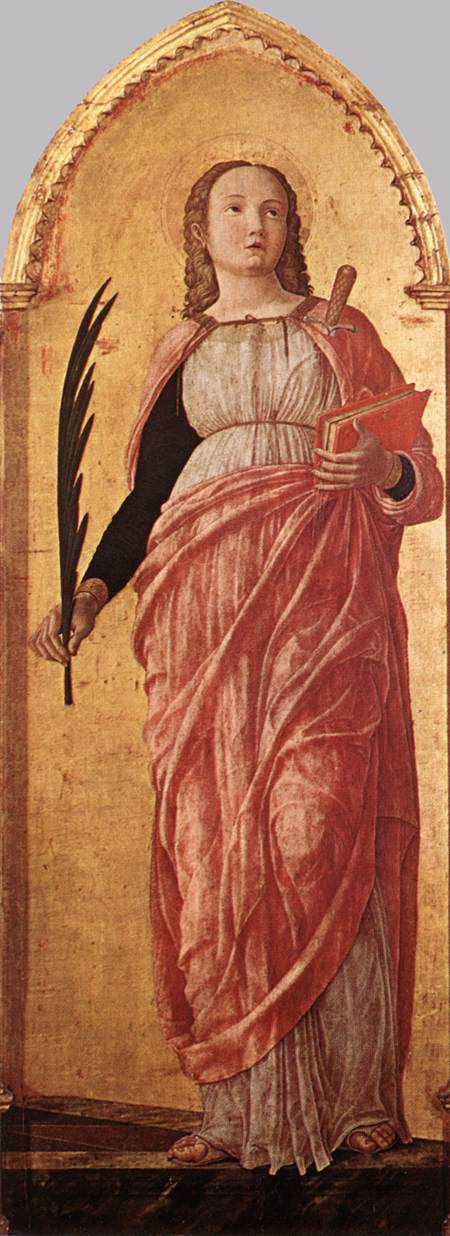By Anne Leader
On 10 August, 1453, Andrea Mantegna, aged only 22, signed a contract with Abbot Mauro dei Folperti to paint an altarpiece for the Benedictine monastery of Santa Giustina in Padua. A polyptych of twelve panels, the painting stood over the altar of the chapel dedicated to the evangelist St. Luke, who works at his writing desk flanked by eight saints and crowned by an image of Jesus as Man of Sorrows between Mary and John the Evangelist.
While some of the saints are familiar with broad popularity, others are of special interest to the locale and to the monastery. They are, clockwise from upper left: St. Daniel of Padua, St. Jerome, the Virgin Mary, Jesus, St. John the Evangelist, St. Augustine, St. Sebastian, St. Justina, St. Benedict, St. Prosdocimus, and St. Scolastica. Mantegna included his signature as an illusionistic inscription on the marble column supporting Luke’s desk. The painting is currently on view at the Pinacoteca di Brera in Milan.
Reference: Gabriele Finaldi. “Mantegna, Andrea.” Grove Art Online. Oxford Art Online. Oxford University Press.



